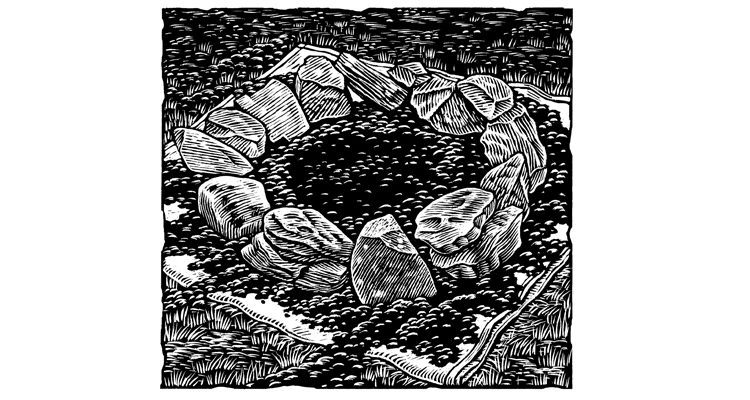Build Your Own Fire Ring

'(Illustration by David Danz)'
Location, Location, Location
There’s a saying for when an idea proliferates really fast: “It spread like wildfire.” Remember that. Use an established fire ring, if available. If not, here’s how to prep a suitable area.
1. Choose a sheltered spot beneath an opening in the tree canopy or where limbs are at least 12 feet high.
2. If the ground is already dirt or sand, clear away any flammable debris in a 5-foot circle. If the ground is grassy or thick with duff, lay down a tarp or space blanket (folded to the size of your fire).
3. Collect dirt, sand, or gravel and stones from an area where they’re loose.
4. Build a circular, flat mound 3 to 5 inches thick and as wide as a car tire on the cleared ground or your tarp. This protects against leaving behind a burn mark or letting embers spread. Never site a fire in a ditch, which will hinder the flames’ ability to draw in air at the base.
5. Use fist-size or larger stones to build a fire ring, forming a physical barrier.
6. Have a few liters of water handy to use for emergency extinguishment.
Troubleshoot this: It’s windy.
Wind makes fires hard to start and control. Site yours on the lee side of a natural windbreak, like a large boulder or fallen stump. If it’s slightly breezy, protect your nascent flame with a cupped hand or your body or pack. If the wind is blowing up to 10 mph (saplings are swaying), drive an inch-thick green stick into the ground at a 30-degree angle. Point the end of the stick with the wind, and place your tinder where the stick meets the ground. Lean kindling onto the angled stick, creating walls. In wind faster than 10 mph, forgo the fire.